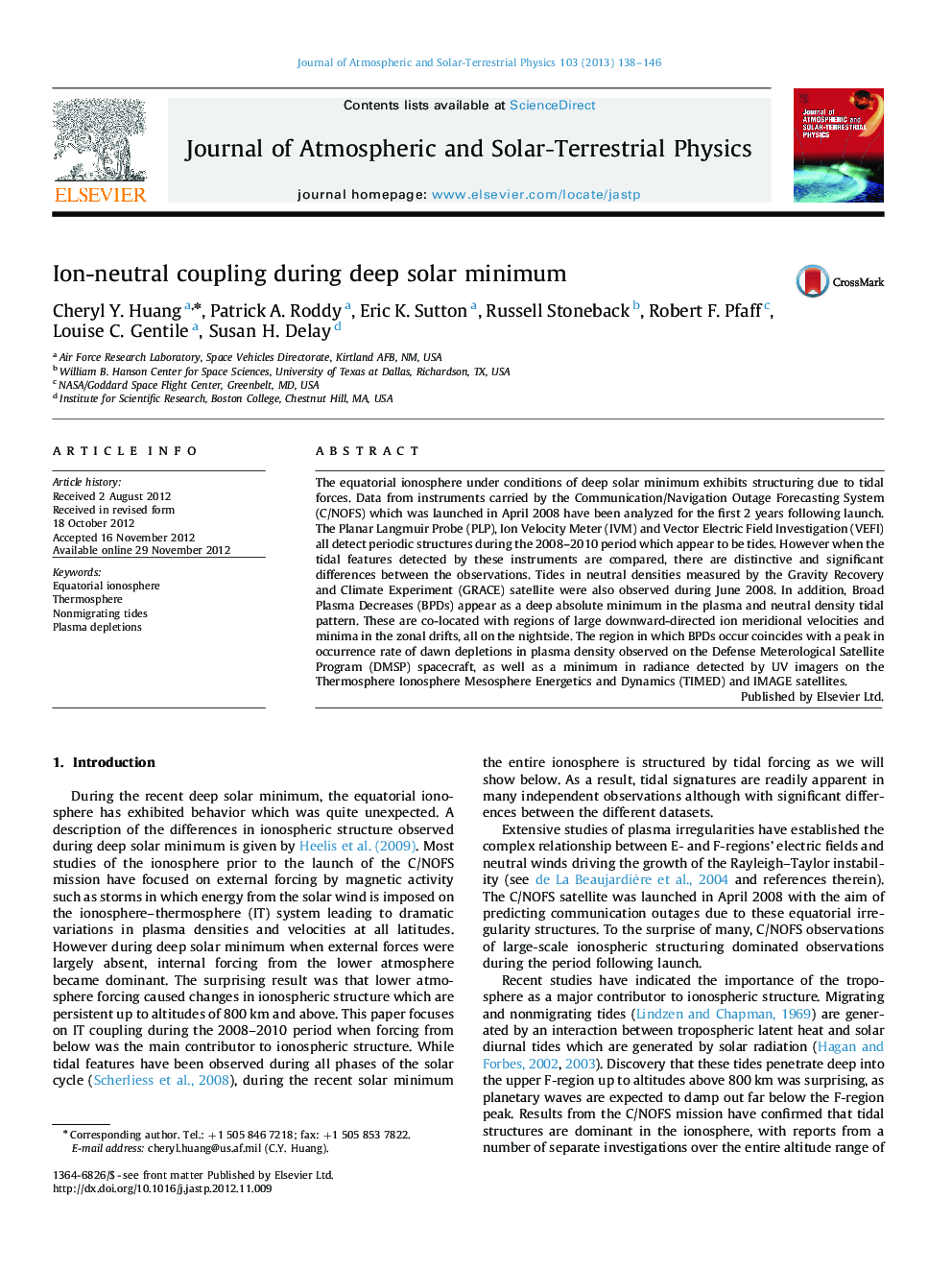| Article ID | Journal | Published Year | Pages | File Type |
|---|---|---|---|---|
| 1776790 | Journal of Atmospheric and Solar-Terrestrial Physics | 2013 | 9 Pages |
The equatorial ionosphere under conditions of deep solar minimum exhibits structuring due to tidal forces. Data from instruments carried by the Communication/Navigation Outage Forecasting System (C/NOFS) which was launched in April 2008 have been analyzed for the first 2 years following launch. The Planar Langmuir Probe (PLP), Ion Velocity Meter (IVM) and Vector Electric Field Investigation (VEFI) all detect periodic structures during the 2008–2010 period which appear to be tides. However when the tidal features detected by these instruments are compared, there are distinctive and significant differences between the observations. Tides in neutral densities measured by the Gravity Recovery and Climate Experiment (GRACE) satellite were also observed during June 2008. In addition, Broad Plasma Decreases (BPDs) appear as a deep absolute minimum in the plasma and neutral density tidal pattern. These are co-located with regions of large downward-directed ion meridional velocities and minima in the zonal drifts, all on the nightside. The region in which BPDs occur coincides with a peak in occurrence rate of dawn depletions in plasma density observed on the Defense Meterological Satellite Program (DMSP) spacecraft, as well as a minimum in radiance detected by UV imagers on the Thermosphere Ionosphere Mesosphere Energetics and Dynamics (TIMED) and IMAGE satellites.
► Ion-neutral coupling during solar minimum. ► Tidal structures observed in 3 C/NOFS investigations. ► Broad plasma decreases as part of tidal pattern.
